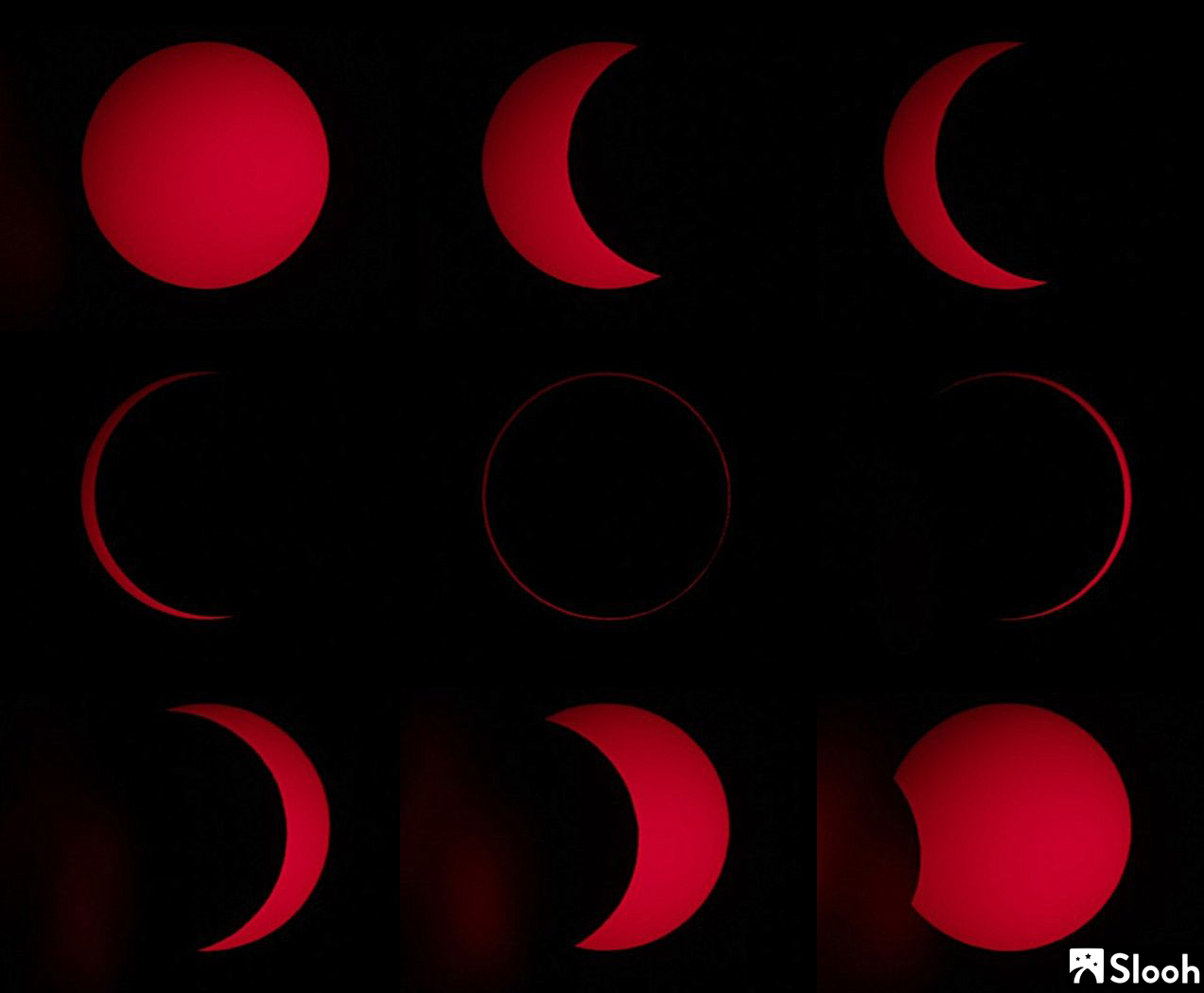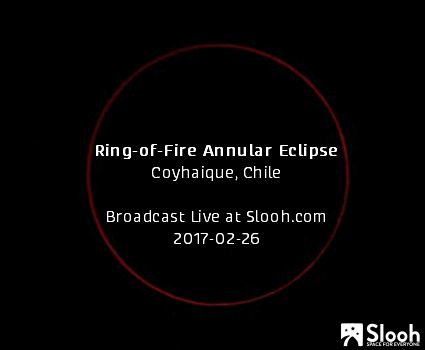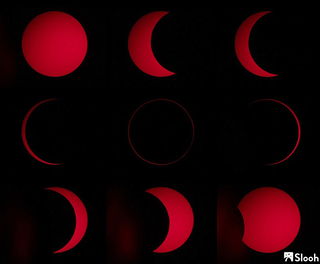Moon Blocks (Most of) the Sun in 'Ring of Fire' Solar Eclipse

A "ring of fire" appeared in the sky over parts of South America, the Atlantic Ocean and Africa today (Feb. 26), during an annular solar eclipse.
An annular solar eclipse occurs when the moon passes directly in front of the face of the sun, but does not appear large enough in the sky to entirely cover the star. The black disc of the moon blocks out most of the sun's face, but a sliver of the sun remains visible. You can see a video of this incredible sight here, courtesy of the Slooh Community Observatory.

Slooh hosted a live webcast of the annular eclipse, and shared views of the event from Chile, Argentina, and Uruguay. At the observatory in Chile, the eclipse peaked at about 8:35 a.m. EST (1335 GMT), creating a halo of light in the sky. [Where to See the 2017 Total Solar Eclipse, State by State]
"That is mind boggling!" said Gerard Monteux, host of the Slooh webcast, as he watched the dark sphere of the moon passing over the bright disc of the sun, eventually creating a red "ring of fire." When the eclipse reached its peak, Monteux became quiet for a few seconds. "I'm sorry, I'm just…I'm speechless," he said.
"It's hard to believe that's our sun that we see every day," said Burnie Burns, founder of Rooster Teeth Productions and a guest on the webcast. "It's so interesting to see something from a totally new perspective. Look at that!"
The moon's orbit around the Earth is not a perfect circle, but an ellipse (which is more like an oval). That means the moon isn't always the same distance away from the Earth. When the moon is close to the Earth, it appears larger in the sky, so that during an eclipse the moon can appear to block the entire disc of the sun. During an annular eclipse, the moon is farther away from the Earth, and appears smaller in the sky, so it does not entirely cover the disc of the sun.

During the Slooh webcast, Eric Edelman, a Slooh astronomer, said that modern science provides humans with the opportunity to not only understand eclipses, but predict when and where they will occur.
Get the Space.com Newsletter
Breaking space news, the latest updates on rocket launches, skywatching events and more!
"At this point we can predict eclipses out hundreds of years because we know the orbits of [the Earth, sun and moon], and we know that to an extreme precision," Edelman said. The alignment of those three bodies "shows to us that our universe is constantly in motion, and [during an eclipse] we get to see a really incredible piece of that action," he said.
On Aug. 21, 2017, a total solar eclipse will be visible in the U.S. You can learn more about where and how to see the total eclipse here at Space.com.
Follow Calla Cofield @callacofield.Follow us @Spacedotcom, Facebook and Google+. Original article on Space.com.
Join our Space Forums to keep talking space on the latest missions, night sky and more! And if you have a news tip, correction or comment, let us know at: community@space.com.

Calla Cofield joined Space.com's crew in October 2014. She enjoys writing about black holes, exploding stars, ripples in space-time, science in comic books, and all the mysteries of the cosmos. Prior to joining Space.com Calla worked as a freelance writer, with her work appearing in APS News, Symmetry magazine, Scientific American, Nature News, Physics World, and others. From 2010 to 2014 she was a producer for The Physics Central Podcast. Previously, Calla worked at the American Museum of Natural History in New York City (hands down the best office building ever) and SLAC National Accelerator Laboratory in California. Calla studied physics at the University of Massachusetts, Amherst and is originally from Sandy, Utah. In 2018, Calla left Space.com to join NASA's Jet Propulsion Laboratory media team where she oversees astronomy, physics, exoplanets and the Cold Atom Lab mission. She has been underground at three of the largest particle accelerators in the world and would really like to know what the heck dark matter is. Contact Calla via: E-Mail – Twitter